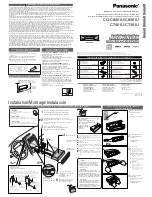
Class 2 (DPM2)”.
Class 1 encoder
Encoder class must be set when you configure the device.
Mandatory
Class 1
provides the basic functions of the device
and can be used for:
•
sending the position value (see
parameter);
•
changing the counting direction (see
parameter);
•
•
acquiring reduced diagnostic information (see
parameter = “16 bytes fixed (6+10)”).
Class 2 (+VEL) encoder
Encoder class must be set when you configure the device.
Class 2 (+VEL)
provides all the Class 1 and Class 2 functions
and additional velocity-related functions:
•
transmission of the velocity value (see
parameter);
•
setting of the velocity measuring unit (see
parameter).
Class 2 encoder
Encoder class must be set when you configure the device.
Class 2
provides all the Class 1 functions and additional
advanced functions such as:
•
parameters);
•
extended diagnostic information (see
parameter = “16 bytes (6+10)” or “63 bytes (6+57)”).
Communication Function
Block (Comm FB)
A basic function block defined for PROFIBUS DP and supplied
by the PLC manufacturer for the standardized access of user
programs to field devices. The standardization is based on IEC
61131-3. The PNO maintains a guideline "PROFIBUS
Communication and Proxy Function Blocks acc. to IEC 61131-
3", order no. 2.182.
Communication
Parameter
Communication parameters are parameters, which adjust the
communication protocol function to the current net
configuration. Communication parameters exist for all phases
of the communication protocols. Examples are bus address,
token rotation time, idle time. See "Slave parametrization" and
"Device parametrization".
Communication Profile
IEC 61158 comprises a summary of layer stacks of several
different fieldbusses. IEC 61784 defines the useful
combinations of these stacks via communication profiles
CPF3/1 up to CPF3/3 (PROFINET). One of these is PROFIBUS DP.
Within this communication profile three different physical
profiles are defined:
•
RS 485 (RS 485-IS);
•
MBP-IS (MBP-LP, MBP);
•
Fibre Optics.










































